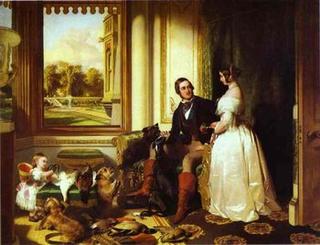 If you're been reading my Linda's Blog for awhile then you know I love history, research, and that I'm a big advocate for women's rights. You also know that I love the Victorian period and love to design Victorian dolls.
If you're been reading my Linda's Blog for awhile then you know I love history, research, and that I'm a big advocate for women's rights. You also know that I love the Victorian period and love to design Victorian dolls.So, I decided to do a little research on Women's Rights (or I should say lack of women's rights) in the Victorian Era and my fascination for that period. I quickly came to the conclusion that while I love the fashions of the Victorian period, I clearly could never have been a Victorian woman and here's why.
The following excerpts were taken from Wikipedia, the free encyclopedia. "The Victorian Era (1837 to 1901) symbolized by the reign of British monarch Queen Victoria was a very difficult period for women, because of the vision of the "ideal women" shared by most in the society."
"The legal rights of married women were similar to those of children. They could not vote or sue or even own property. Also, they were seen as pure and clean. Because of this view, their bodies were seen as temples which should not be adorned with makeup nor should they be used for such pleasurable things as sex. The role of women was to have children and tend to the house. They could not hold jobs unless they were those of a teacher nor were they allowed to have their own checking accounts or savings accounts. In the end, they were to be treated as saints, but saints that had no legal rights. "
Does this sound like "women should be barefoot, pregnant and in the kitchen" or what? I can't see a modern day woman wanting to tolerate that. No voting, no suing, no property. Must remain pure and clean in body and soul. I don't think so.
"In the Victorian Era the law regarded a married couple as one person. The husband was responsible for his wife and bound by law to protect her. She was supposed to obey him and he had the right to enforce this. The personal property the wife brought into the marriage was then owned by the husband, even in case of a divorce. The income of the wife belonged completely to her husband and the custody of children belonged to the father as well. He was able to refuse any contact between the mother and her children. The wife was not able to conclude a contract on her own. She needed her husband’s agreement. In addition, the married woman could not be punished for certain offences, such as theft or burglary if she acted under the command of her husband. It was impossible to charge the wife for concealing her husband and for stealing from her husband as they were one person in law. "
I can't possibly imagine that any female in her right mind would think that this made sense. Is it any wonder that they wrote "obey" out of the marriage vows of today? Personal property of the wife became the husband's. Can you imagine a husband saying to his wife "What's mine is mine and what's yours is mine, too." And, the wife saying, "Yes, of course, dear!"
During this time women had no legal say in how many children they would have nor would they get custody of children if the marriage ended in divorce. You have to say to yourself, "Were they out of their minds!" No say in how many children you're going to have? I just shake my head.
"A very special connection existed between women and their brothers. Sisters had to treat their brothers as they would treat their future husbands. They were dependent on their male family members as the brother’s affection might secure their future in case their husband treated them badly or they did not get married at all. "
The Victorian men had the Victorian women trapped. If you didn't get married, basically, your brother owned you. If you did get married then your husband owned you.
At that time educated women working in academic jobs were considered abnormal and monstrous. ABNORMAL and MONSTROUS! I bet all the women professors of today would just love to hear this. The only jobs open to women were governess, servant, teacher at boarding school, nurse or author.
"The attitude towards women and education was that education of women needn't be the same as that of men. Women were supposed to know the things necessary to bring up their children and to keep house. That’s why subjects as history, geography and general literature were of extreme importance, whereas Latin and Greek were of little importance. Woman who wanted to study something like law, physics, engineering, science or art were satirized and dismissed. People thought that it was unnecessary for women to go to a university. It was even said that studying was against their nature and that it could make them ill. They should stay more or less an “Ornament of Society” and be subordinate to their husbands. Obedience was the only requirement. "
Studying was against their nature and could make them ill. I MUST be very sick then. Ornament of society - NEVER. No wonder the women revolted. No wonder the feminist movement was born out of this period?
But, best of all Victorian women had to be SUBORDINATE to their husbands. All I can say to that is, "You've got to be kidding! My husband would hate that."


 When I think of a "Lady" either I picture someone like Audrey Hepburns' character in "My Fair Lady" or I picture a Victorian woman like the picture to the left. Someone refined and dignified. Someone who has good manners and who also just happens to be wearing a beautiful Victorian dress. I always seem to get back to the Victorian dresses, don't I? Must be an obsession. Yah think? In my mind, a "Lady" is the ultimate perfect female. But, is she really?
When I think of a "Lady" either I picture someone like Audrey Hepburns' character in "My Fair Lady" or I picture a Victorian woman like the picture to the left. Someone refined and dignified. Someone who has good manners and who also just happens to be wearing a beautiful Victorian dress. I always seem to get back to the Victorian dresses, don't I? Must be an obsession. Yah think? In my mind, a "Lady" is the ultimate perfect female. But, is she really? Someone who has the courage of her convictions. Someone who can use her authority when it is required. Someone who can caress and comfort anyone who is in distress. Someone who can laugh with children and lose herself in their imagination once in awhile. Someone who isn't afraid to get her hands "dirty." Someone with skills who is willing to try anything, at least once. Someone who loves and respects others and wants nothing but the best for them. Someone who tries to see the good in others. Someone who will try her best to help others succeed. Someone who will accept others with all their faults and love them just the same. Someone who always tries to put her best foot forward, but isn't afraid to fail. Someone who can see the beauty in life. Someone who doesn't judge others by their pocketbook or social standing. Someone who can stand tall and be dignified at the same time. Someone who allows herself to be "human." Someone who doesn't define herself by her gender and doesn't allow others to do so either.
Someone who has the courage of her convictions. Someone who can use her authority when it is required. Someone who can caress and comfort anyone who is in distress. Someone who can laugh with children and lose herself in their imagination once in awhile. Someone who isn't afraid to get her hands "dirty." Someone with skills who is willing to try anything, at least once. Someone who loves and respects others and wants nothing but the best for them. Someone who tries to see the good in others. Someone who will try her best to help others succeed. Someone who will accept others with all their faults and love them just the same. Someone who always tries to put her best foot forward, but isn't afraid to fail. Someone who can see the beauty in life. Someone who doesn't judge others by their pocketbook or social standing. Someone who can stand tall and be dignified at the same time. Someone who allows herself to be "human." Someone who doesn't define herself by her gender and doesn't allow others to do so either.  Childhood tea parties with ones dolls and friends were just so delightful. Weren't they? Not only did you get to have all your dollies around you, but you also got to play dress-up, too. I can remember having tea parties as a child. Sometimes it was just my dollies and me, but that was okay. They were always great company. I'd serve my dollies tea in one of my tea sets. They would carry on about this or that. We'd have a grand old time.
Childhood tea parties with ones dolls and friends were just so delightful. Weren't they? Not only did you get to have all your dollies around you, but you also got to play dress-up, too. I can remember having tea parties as a child. Sometimes it was just my dollies and me, but that was okay. They were always great company. I'd serve my dollies tea in one of my tea sets. They would carry on about this or that. We'd have a grand old time. In case you've never heard the word "etiquette" it means "The body of prescribed social usages" and "Any special code of behavior or courtesy." In a polite society it is the way in which individuals deal with each other socially. It is a set of rules of good manners and behavior that changes with the times. Etiquette contains rules for the simplest actions ( such as, "Hello" or "How are you?") to rules for the most elaborate social event.
In case you've never heard the word "etiquette" it means "The body of prescribed social usages" and "Any special code of behavior or courtesy." In a polite society it is the way in which individuals deal with each other socially. It is a set of rules of good manners and behavior that changes with the times. Etiquette contains rules for the simplest actions ( such as, "Hello" or "How are you?") to rules for the most elaborate social event.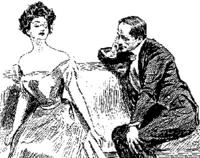
 I love to just browse thru history books, genealogy records, and the encyclopedia. Browsing thru the Wikipedia encyclopedia I came across the women's suffrage stamp (see picture on the left). In looking at the women's suffrage stamp I got to thinking about my great, great Aunt "Flossie" and my Grandmother "Dee." Why did these two women come to mind when I saw the stamp? They came to mind because they grew up during the time that the women's suffrage movement was at its peak.
I love to just browse thru history books, genealogy records, and the encyclopedia. Browsing thru the Wikipedia encyclopedia I came across the women's suffrage stamp (see picture on the left). In looking at the women's suffrage stamp I got to thinking about my great, great Aunt "Flossie" and my Grandmother "Dee." Why did these two women come to mind when I saw the stamp? They came to mind because they grew up during the time that the women's suffrage movement was at its peak. My "Flossie" Victorian doll is named after my great, great Aunt Florence (who is shown on the left). My great, great Aunt Flossie was born in 1882 and was the first women to go to college in our family. She graduated from Tufts University in 1904. She then went on to be one of the first women to work for the State Department of Corporations and Taxation. She worked for the state until she retired in 1947.
My "Flossie" Victorian doll is named after my great, great Aunt Florence (who is shown on the left). My great, great Aunt Flossie was born in 1882 and was the first women to go to college in our family. She graduated from Tufts University in 1904. She then went on to be one of the first women to work for the State Department of Corporations and Taxation. She worked for the state until she retired in 1947.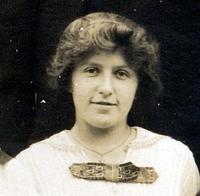 My great, great Aunt "Flossie" was a true believer of women's rights, as was my Grandmother "Dee". Both women were very intelligent and were very strong women. Both were very confident in themselves and both held strong beliefs and convictions. They both were believers in women's rights. Their beliefs definitely had a profound affect on my mother which, in turn, had an affect on me.
My great, great Aunt "Flossie" was a true believer of women's rights, as was my Grandmother "Dee". Both women were very intelligent and were very strong women. Both were very confident in themselves and both held strong beliefs and convictions. They both were believers in women's rights. Their beliefs definitely had a profound affect on my mother which, in turn, had an affect on me. I have loved Victorian dolls since I was a little girl and can blame my grandmother for that. You see, as a young girl she gave me a Godey’s Fashion print for August 1870 that belonged to my great, great Aunt Flossie. From that moment on I was hooked. I was captivated by the beautiful dresses and wanted to create dolls wearing them.
I have loved Victorian dolls since I was a little girl and can blame my grandmother for that. You see, as a young girl she gave me a Godey’s Fashion print for August 1870 that belonged to my great, great Aunt Flossie. From that moment on I was hooked. I was captivated by the beautiful dresses and wanted to create dolls wearing them. As far as I am concerned "Beauty lies not only in what is seen, but what is imagined. I believe the essence of a dolls beauty should determine her personality."
As far as I am concerned "Beauty lies not only in what is seen, but what is imagined. I believe the essence of a dolls beauty should determine her personality." I have also been a history buff since I was a little girl and loved doing research for history projects all throughout my school years. I especially loved to research everything and anything about the Victorian Era. Their history, their etiquette, their fashion, their hopes, their desires.... In fact, sometimes I think I was born in the wrong era.
I have also been a history buff since I was a little girl and loved doing research for history projects all throughout my school years. I especially loved to research everything and anything about the Victorian Era. Their history, their etiquette, their fashion, their hopes, their desires.... In fact, sometimes I think I was born in the wrong era. I figured that there had to be a history of handmade faceless dolls out there or, at least, some cultures and norms. Believe it or not but there wasn't a lot of information back in 2006 on the web on either the history of faceless dolls or cultures and norms that started such a tradition. There was a little more when I updated my research in 2009.
I figured that there had to be a history of handmade faceless dolls out there or, at least, some cultures and norms. Believe it or not but there wasn't a lot of information back in 2006 on the web on either the history of faceless dolls or cultures and norms that started such a tradition. There was a little more when I updated my research in 2009. I was hoping that now, in 2015, things would have changed a little and there would be more information on their history. I'm happy to report that there is a lot more now and that over the last few years there is a growing trend towards creating faceless dolls in all sorts of doll mediums - which thrills me to no end.
I was hoping that now, in 2015, things would have changed a little and there would be more information on their history. I'm happy to report that there is a lot more now and that over the last few years there is a growing trend towards creating faceless dolls in all sorts of doll mediums - which thrills me to no end. Probably the oldest legend has to do with "faceless" corn husk dolls. Some say they are the oldest form of doll known in America and have been around for more than a thousand years. The corn husk doll shown to the right is a picture of a corn husk doll that is in the USU Museum of Anthropology.
Probably the oldest legend has to do with "faceless" corn husk dolls. Some say they are the oldest form of doll known in America and have been around for more than a thousand years. The corn husk doll shown to the right is a picture of a corn husk doll that is in the USU Museum of Anthropology.
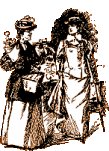 Today is the biggest shopping day of the year. The day after Thanksgiving, the traditional start of the holiday shopping season. Plus, Monday is the biggest shopping day of the year for Internet sales. Given that, I thought it might be fun to take a look at some of the Victorian rules of etiquette for shopping to see if they could be applied to today.
Today is the biggest shopping day of the year. The day after Thanksgiving, the traditional start of the holiday shopping season. Plus, Monday is the biggest shopping day of the year for Internet sales. Given that, I thought it might be fun to take a look at some of the Victorian rules of etiquette for shopping to see if they could be applied to today.


 Who doesn't love cute, cuddly bunnies. Crafters and doll makers certainly do. When a crafter thinks of Easter or Spring they generally think bunnies and eggs. They've become a staple of Easter and Spring.
Who doesn't love cute, cuddly bunnies. Crafters and doll makers certainly do. When a crafter thinks of Easter or Spring they generally think bunnies and eggs. They've become a staple of Easter and Spring.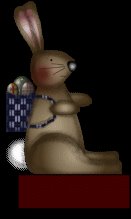
 Happy Valentine's Day, tomorrow, to all the "young at heart" lovers of the world. I said "young at heart" so that no one would feel left out. Young, old, single, married, anyone with a pulse!
Happy Valentine's Day, tomorrow, to all the "young at heart" lovers of the world. I said "young at heart" so that no one would feel left out. Young, old, single, married, anyone with a pulse!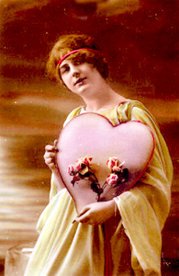 Valentine's Day didn't get imported into the U.S. until the 19Th century and was brought by British settlers. Most of the valentines back then were hand written. The 1st mass produced valentines were on embossed paper and were sold around 1847 by Esther Howland of Worcester, Massachusetts. Her father had a stationary store and she loved an English valentine she had received so she decided to create her own. She made her elaborate creations with real lace, ribbons, and colorful pictures known as "scrap." Kind of sounds like today's version of scrapbooking. The picture to the right is a Valentine's Day postcard, circa 1910.
Valentine's Day didn't get imported into the U.S. until the 19Th century and was brought by British settlers. Most of the valentines back then were hand written. The 1st mass produced valentines were on embossed paper and were sold around 1847 by Esther Howland of Worcester, Massachusetts. Her father had a stationary store and she loved an English valentine she had received so she decided to create her own. She made her elaborate creations with real lace, ribbons, and colorful pictures known as "scrap." Kind of sounds like today's version of scrapbooking. The picture to the right is a Valentine's Day postcard, circa 1910. I can remember my Mother telling me that, as I'm sure most of you can too. We all know Santa as the familiar image with his red suit, sled or sleigh, reindeer's, and sacks of toys delivering packages to
I can remember my Mother telling me that, as I'm sure most of you can too. We all know Santa as the familiar image with his red suit, sled or sleigh, reindeer's, and sacks of toys delivering packages to 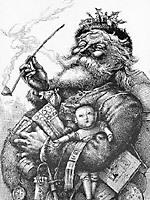 Thomas Nast helped create the kinder, more fatherly, plumper Santa as we know him today. But, Thomas Nast wasn't the only person to contribute to this legend. Clement Clarke Moore was a huge contributor as in 1822 he published his poem "A visit From St. Nicholas," bittern known as "The Night Before Christmas." His poem is the first mention of a sleigh powered by "eight tiny reindeer" and mentioning their names.
Thomas Nast helped create the kinder, more fatherly, plumper Santa as we know him today. But, Thomas Nast wasn't the only person to contribute to this legend. Clement Clarke Moore was a huge contributor as in 1822 he published his poem "A visit From St. Nicholas," bittern known as "The Night Before Christmas." His poem is the first mention of a sleigh powered by "eight tiny reindeer" and mentioning their names. The legend of Father Christmas, however, is ancient and far more complex. Part of the legend is attributed to St. Nicholas and part to a jovial medieval figure in the "Spirit of Christmas." In Russia, Father Christmas carries a piglet under one arm. St. Nicholas is also know as Santa Claus, Father Christmas, Heilige Nikolaus, and Pere Noel.
The legend of Father Christmas, however, is ancient and far more complex. Part of the legend is attributed to St. Nicholas and part to a jovial medieval figure in the "Spirit of Christmas." In Russia, Father Christmas carries a piglet under one arm. St. Nicholas is also know as Santa Claus, Father Christmas, Heilige Nikolaus, and Pere Noel. Caroling & carolers - another long lost tradition. Unfortunately, I think the lovely Christmas tradition of caroling for your neighbors has been replaced with collecting caroling dolls. Not that I think collecting any kind of doll is bad. It's just that caroling and singing holiday songs is such a lovely way to wish your neighbors a wonderful, holiday season. So, before we lose the tradition I think we need to understand why the tradition began.
Caroling & carolers - another long lost tradition. Unfortunately, I think the lovely Christmas tradition of caroling for your neighbors has been replaced with collecting caroling dolls. Not that I think collecting any kind of doll is bad. It's just that caroling and singing holiday songs is such a lovely way to wish your neighbors a wonderful, holiday season. So, before we lose the tradition I think we need to understand why the tradition began.